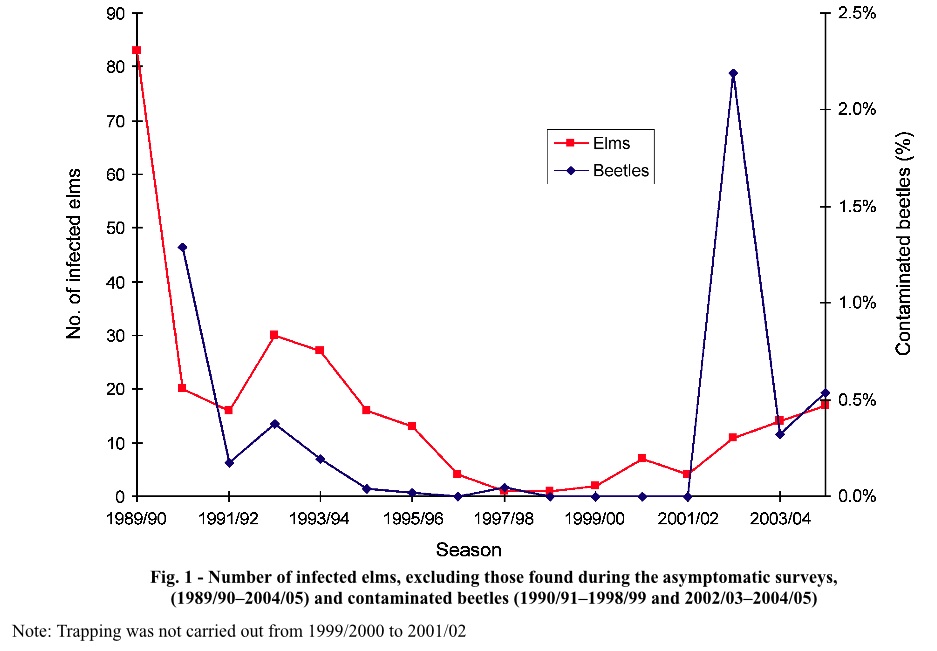PESTS AND DISEASES OF FORESTRY IN NEW ZEALAND
Dutch elm disease in Auckland, 2004/05
Scion is the leading provider of forest-related knowledge in New Zealand
Formerly known as the Forest Research Institute, Scion has been a leader in research relating to forest health for over 50 years. The Rotorua-based Crown Research Institute continues to provide science that will protect all forests from damage caused by insect pests, pathogens and weeds. The information presented below arises from these research activities.
From Forest Health News 155, September 2005.
The Dutch elm disease eradication campaign during the 2004/05 summer consisted of two full disease detection surveys, a series of special surveys in response to the detection of diseased elms or high numbers of infective beetles caught, and a pheromone trapping programme.
Infected trees were found at 11 addresses — the Eastern suburbs (Greenhill Cres, Pakuranga; Mellons Bay Rd and McMillan Pl, Mellons Bay), Central Auckland (Upland Rd, Remuera), North Shore (Porritt Ave, Chatswood), and West Auckland (Chistlehurst St (two addresses), McLaren Park; Forest Hill Rd (two addresses), Forest Hill; Rosewarne Cres and Barnfield Pl, Glendene). It was the first time in nine seasons that Dutch elm disease had been confirmed in an elm in the North Shore. The infected elms at North Shore and McMillan Pl were growing very close to locations where diseased elms had been removed in 1992/93. Special surveys conducted in West Auckland were successful in finding diseased elms.

For the pheromone trapping programme, 20 traps were initially deployed in high risk areas. As a result of finding diseased trees the array was increased to 47 traps by the end of the season. When the trapping was stopped on 18 May, a total of 3124 beetles had been caught, of which 17 or 0.54% (Fig. 1) at seven sites were contaminated by Ophiostoma novo-ulmi. Infective beetles were trapped at Chatswood in the North Shore, East Tamaki, Howick and Pakuranga in the Eastern Suburbs and at Henderson Valley in West Auckland. Diseased elms have recently been removed near four of the seven locations where infective beetles were trapped.
Lindsay Bulman (Ensis)
This information is intended for general interest only. It is not intended to be a substitute for specific specialist advice on any matter and should not be relied on for that purpose. Scion will not be liable for any direct, indirect, incidental, special, consequential or exemplary damages, loss of profits, or any other intangible losses that result from using the information provided on this site.
(Scion is the trading name of the New Zealand Forest Research Institute Limited.)

 Farm Forestry New Zealand
Farm Forestry New Zealand

